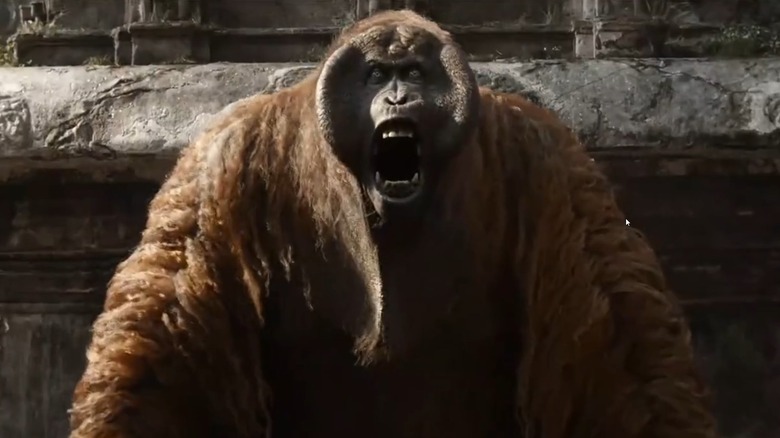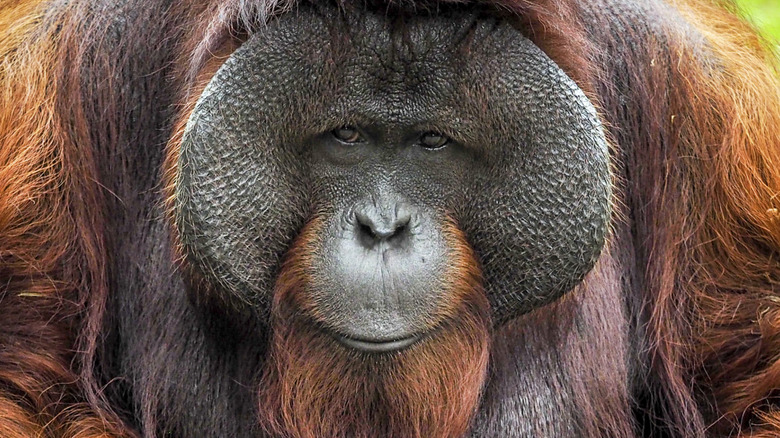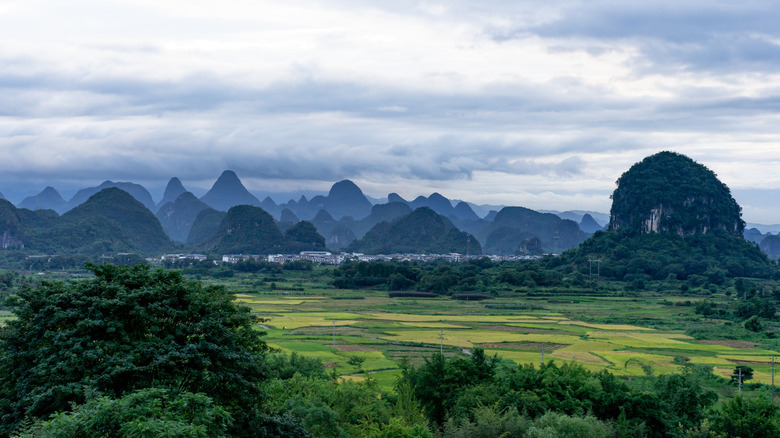What If This Extinct Ape Was Still Alive Today?
When we look back at history, there are so many fascinating insights to be gleaned, which in turn can illuminate our present and teach us about how best to navigate our future. There's also an alarming amount of absolute nightmare beasts to be found, especially when we look at prehistory — from the largest prehistoric arthropod to the snake discovered in India that was longer than a bus. Perhaps an even more frightening prospect than the giant snake in that regard is Gigantopithecus, a massive ape that lived during the Pleistocene period and could reach weights of up to 660 pounds.
Thankfully there are no bus-sized terror snakes or over-sized apes creeping across the planet's surface today, which is a darn good thing because many of these extinct creatures would absolutely destroy Earth if they were alive today. Gigantopithecus' probably wouldn't destroy the Earth, but its raw size could have an adverse impact on the natural habitats of many forest-dwelling animals, pushing them out of their niches, making it more difficult for these other creatures to survive. But the sad truth is that it would probably struggle to survive.
Gigantopithecus was the world's largest primate
While there is so much we don't know about Gigantopithecus, we do know it was a plant eater. A 2024 study published in Nature analyzed 22 caves in southern China (the former habitat of Gigantopithecus) with researchers concluding a changing plant landscape caused the population of Gigantopithecus to dwindle and eventually disappear completely. That does at least mean we can be reassured that if such a beast were alive today, its herbivorous diet means it would likely be entirely disinterested in gobbling up us comparatively diminutive primates (though it might think nothing of absolutely crushing us were we to get in its way).
Based on the dental anatomy of Gigantopithecus, which includes large teeth with a significant enamel coating, experts have been able to deduce that Gigantopithecus was a specialized herbivore capable of eating a mixture of forest plants that included both abrasive and fibrous food, and enjoyed eating leaves, fruits, and flowers that were available all year in the diverse forests of Guangxi, Guizhou, Hainan, and Hubei provinces.
Gigantopithecus would likely struggle to survive today
If this massive primate were alive today, then, it would likely need to live in a heavily forested ecosystem in order to find the food it would need to survive — about 5,000 calories per day. But things likely wouldn't be that simple. Today, those lush environments that sustained the ape simply don't exist in the same way, which suggests Gigantopithecus might have a tough time surviving in the modern world.
For further evidence of that, we can look at Gigantopithecus' closest living relatives, orangutans. There are three species of orangutan — Bornean, Sumatran and Tapanuli — and each one of them is critically endangered and on the verge of extinction. The Sumatran orangutan is even listed as one of the 25 most endangered primates in the world. This is mostly due to habitat loss via timber logging and agriculture, which, when coupled with the animals' dietary requirements and low reproductive rates, mean the orangutan is in severe danger of being lost forever.
While Gigantopithecus was obviously much larger than today's orangutans, these modern apes are the best analogue we have for the extinct giant, and judging by their plight, Gigantopithecus might well struggle to survive as well. The planet is a much different place today, and when you add in human-caused habitat loss, it doesn't bode well for the prehistoric brute. It's also reasonable to assume humans would be so fascinated by these creatures that we'd try to capture them for display and/or research which would further negatively impact their survival. Far from being a menace, then, Gigantopithecus would likely have a rough time were it alive today.


